Exploring Longxing Temple Heritage: A Must-Visit for Culture Enthusiasts
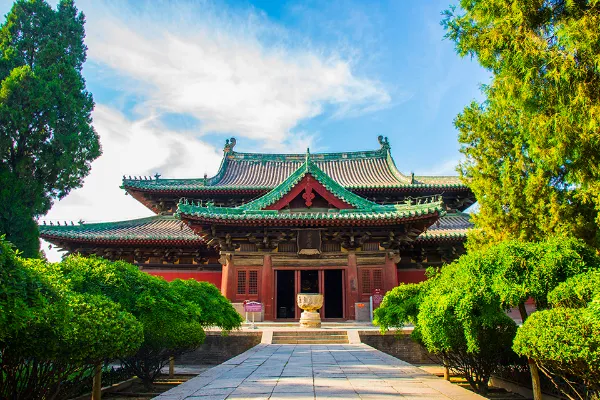
An Essential Guide to Visiting Longxing Temple Heritage
In This Guide
- An Essential Guide to Visiting Longxing Temple Heritage
- The Rich History and Legends of Longxing Temple Heritage
- Main Highlights: What You Absolutely Can’t Miss
- Planning Your Visit: A Practical Guide
- Tickets: Prices, Booking, and Tips
- How to Get There: A Complete Transportation Guide
- Local Cuisine and Accommodation Nearby
- Frequently Asked Questions
- Final Thoughts on Your Trip
Nestled in the serene landscapes of Pengzhou, just a short journey from Chengdu, lies the Longxing Temple, a magnificent testament to China’s rich Buddhist heritage and architectural splendor. Known as the “Sacred Land of Seven Buddhas,” this ancient temple complex, dating back over 1,600 years, offers a fascinating glimpse into the spiritual heart of China. With its majestic pagoda, tranquil courtyards, and intricate halls, Longxing Temple is not just a destination; it is an experience that invites you to pause and reflect.
Stepping through the red walls of Longxing Temple, you are greeted by the gentle sound of bronze bells ringing softly in the wind, a welcome contrast to the hustle and bustle of modern life. The harmonious atmosphere, punctuated by the scent of sandalwood, creates an ideal setting for introspection and peace. As you wander through the temple, the intricate design and thoughtful layout of its structures—such as the Hall of Heavenly Kings and the towering Vajra Throne Stupa—speak volumes about the artistry and devotion that have been cultivated here over centuries.
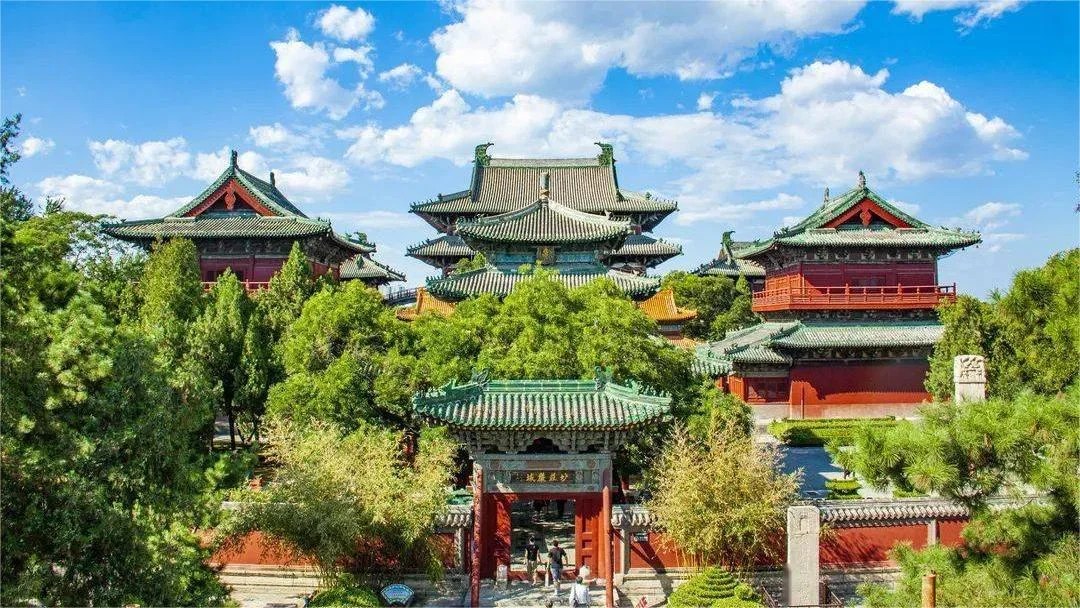
Longxing Temple Heritage.
Highlights of Longxing Temple
-
Vajra Throne Stupa: Standing at an impressive 81 meters, this remarkable structure is one of the tallest Buddhist pagodas in Southeast Asia. Climb to the top for a breathtaking view of the surrounding landscape.
-
Cultural Richness: Longxing Temple is home to one of the last remaining sarira stupas in China, enshrining the relics of the revered Sakyamuni Buddha. This sacred site serves as a pilgrimage destination for many Buddhists and offers insight into the spiritual traditions that have thrived here.
-
Tranquil Surroundings: The temple complex features an array of ancient cypresses, bamboo groves, and serene pathways that beckon you to explore. The dappled sunlight filtering through the leaves creates a peaceful ambiance, perfect for meditative strolls.
-
Vegetarian Cuisine: Don’t miss the chance to indulge in the temple’s simple yet heartwarming vegetarian dishes, particularly the delicious hot soup that warms the soul.
Practical Information
-
Location: Longxing Temple is situated in Pengzhou, a charming city that is easily accessible via a 20-minute high-speed train ride from Chengdu.
-
Admission: Entrance to the temple is free, though a small sanitation fee may apply.
-
Recommended Visit Duration: Allocate around two hours to fully appreciate the beauty and tranquility of the temple.
-
Optimal Visiting Times: For a truly serene experience, consider visiting early in the morning to catch the soft chimes of the morning bells or during sunset when the temple radiates a warm glow.
With its profound historical significance and breathtaking beauty, Longxing Temple is more than just a place of worship; it is a sanctuary that offers a unique opportunity to connect with Chinese history and culture. Whether you are seeking spiritual enlightenment or a peaceful retreat from the world, this ancient temple will surely leave an indelible mark on your journey through China.
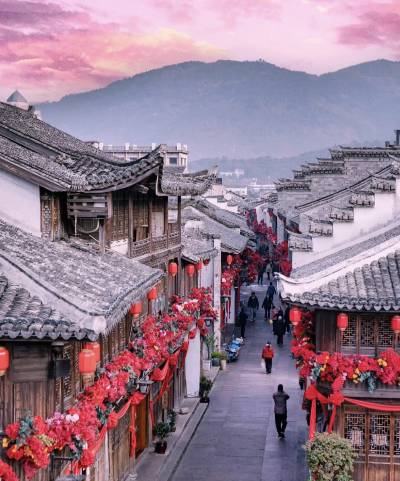
Longxing Temple Heritage.
The Rich History and Legends of Longxing Temple Heritage
Longxing Temple, with its rich tapestry of history and legend, stands as a testament to the enduring spirit of Chinese Buddhism and the cultural heritage of Sichuan. Nestled in the quiet urban area of Pengzhou, this ancient temple complex, originally established over 1,600 years ago during the Eastern Jin Dynasty, has weathered the storms of time, witnessing the rise and fall of dynasties and the ebb and flow of spirituality.
A Journey Through Time
The temple’s history is not just a simple chronicle of architectural evolution; it is interwoven with the narrative of Buddhism’s propagation in China. Initially named the “Sacred Land of Seven Buddhas,” Longxing Temple has undergone five name changes throughout its long history, reflecting the shifts in cultural and religious significance. It is home to the Sakyamuni Relics Stupa, one of only 19 remaining sarira stupas in China, standing at an impressive height of 81 meters. This architectural marvel, which surpasses even the famed Leshan Giant Buddha, symbolizes the profound reverence for the relics of Shakyamuni Buddha, the founder of Buddhism.

Longxing Temple Heritage.
The temple complex itself is a harmonious blend of natural beauty and human craftsmanship. Surrounded by ancient cypress trees and lush bamboo groves, the site boasts a layout characterized by simplicity and elegance. The four main structures—the Hall of Heavenly Kings, the Mahavira Hall, the Tibetan Scripture Building, and the towering stupa—are arranged along a north-south axis, inviting visitors to embark on a contemplative journey through its sacred spaces.
Legends and Myths
Longxing Temple is steeped in legends that add a mystical dimension to its already rich history. Among these tales, one prominent story involves the Seven Buddhas, who are said to have blessed the site with their presence. Devotees believe that these celestial beings continue to watch over the temple, imparting wisdom and tranquility to all who enter.
Another legend speaks of the golden tiles that adorn the temple’s roofs. It is said that the first tiles were fashioned from the earth itself, infused with the essence of the land and the blessings of the Buddhas. This connection to the divine is thought to protect the temple and its visitors from misfortune, making Longxing a sanctuary for those seeking peace and enlightenment.

Longxing Temple Heritage.
Cultural Significance
Longxing Temple is not merely a relic of the past; it plays an active role in the cultural and spiritual life of the region. The temple hosts regular ceremonies, attracting both local devotees and international visitors who come to experience its serene atmosphere and partake in the Buddhist practices. The gentle chime of bronze bells, resonating through the air, serves as a reminder of the temple’s peaceful ambiance and its role as a refuge from the fast-paced world outside.
In addition to its spiritual offerings, Longxing Temple is an architectural gem, showcasing the unique aesthetic of Western Sichuan’s Buddhist structures. Each building is designed not only for functionality but also to create a profound sense of harmony with the natural surroundings. Visitors can wander through the temple’s corridors, flanked by ancient wooden pillars, and experience the subtle interplay of light and shadow that enhances the temple’s meditative quality.
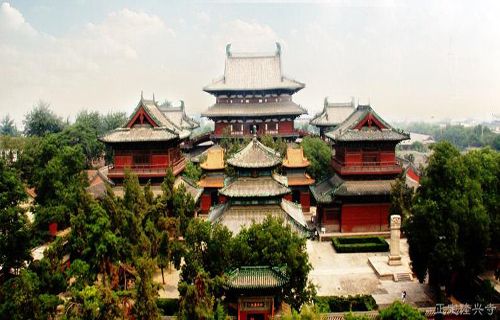
Longxing Temple Heritage.
Conclusion
For travelers seeking an authentic connection to Chinese history and culture, Longxing Temple offers a captivating glimpse into the past, enriched by legends and a vibrant spiritual life. Whether you are drawn by the allure of its architectural splendor or the promise of tranquility within its red walls, a visit to Longxing Temple is an invitation to pause, reflect, and immerse yourself in the profound legacy of Buddhism in China.
Main Highlights: What You Absolutely Can’t Miss
Explore the Rich Heritage of Longxing Temple
Longxing Temple, nestled in the heart of Pengzhou, offers a captivating glimpse into China’s spiritual and architectural history. As you wander through its serene grounds, be prepared to uncover layers of cultural significance, breathtaking architecture, and tranquil beauty. Here’s what you absolutely cannot miss during your visit:
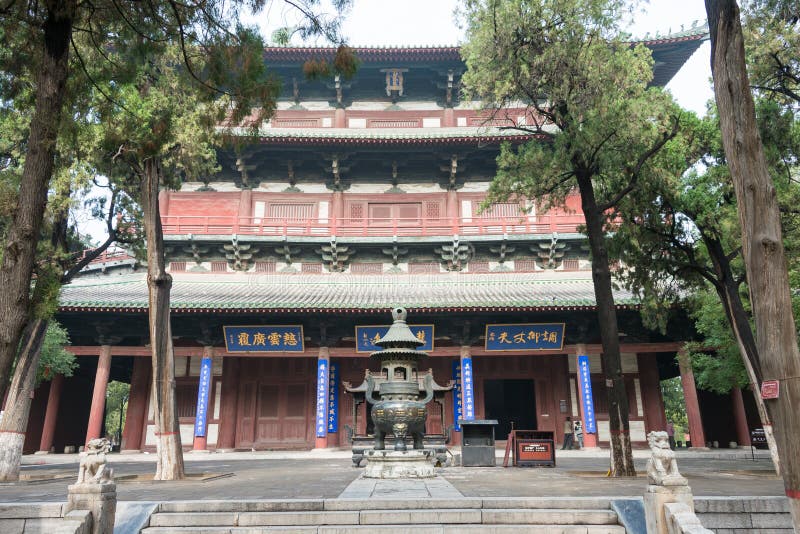
Longxing Temple Heritage.
1. The Majestic Vajra Throne Stupa
Standing tall at 81 meters, the Vajra Throne Stupa is a striking feature of Longxing Temple. This architectural marvel, inspired by Indian Buddhist styles, is one of the few remaining relic stupas in China. As you approach, take a moment to admire its intricate design, which symbolizes the journey of enlightenment. The stupa houses countless Buddha statues, each radiating a sense of peace and devotion that envelops the area.
2. The Hall of Heavenly Kings
Upon entering the temple complex, the Hall of Heavenly Kings greets you with its grand architecture. Adorned with vibrant murals and statues of the Four Heavenly Kings, this hall serves as the protector of the temple. The atmosphere here is imbued with a deep spiritual essence, making it an ideal spot for quiet reflection and appreciation of Buddhist artistry.
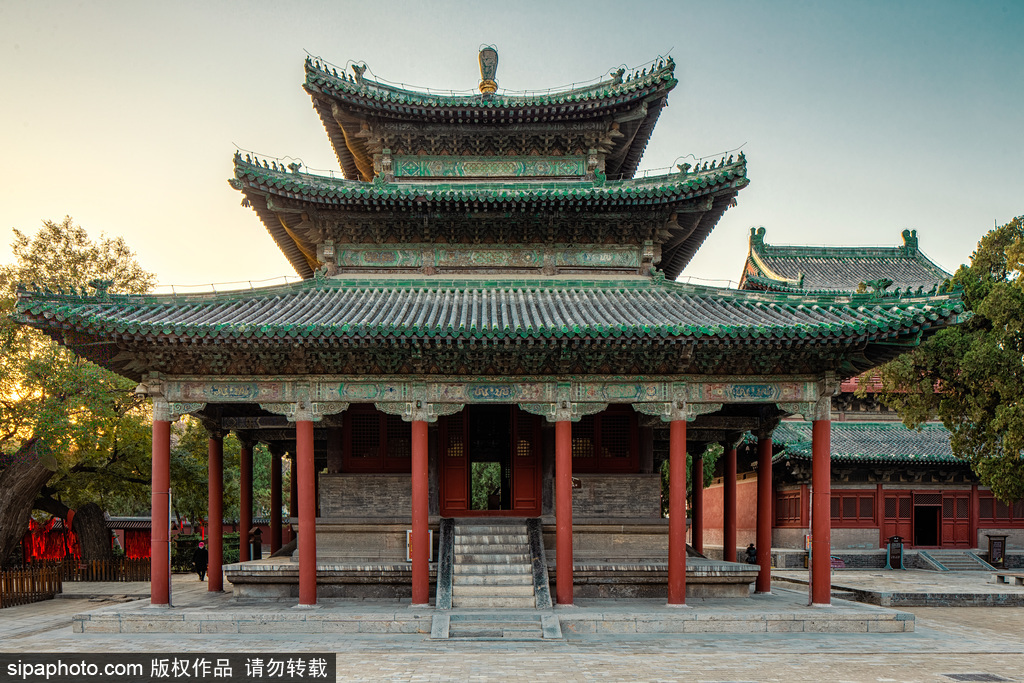
Longxing Temple Heritage.
3. The Main Hall and the Great Buddha
The Main Hall is not to be missed, where the Great Buddha statue sits majestically. This serene figure, with a compassionate gaze, draws visitors into a meditative state. The hall itself is an architectural wonder, showcasing traditional wooden beams and detailed carvings that highlight the craftsmanship of the era. It’s a perfect setting to pause and connect with the rich spiritual heritage of Buddhism.
4. Tibetan Scripture Building
For those interested in the literary aspects of Buddhism, the Tibetan Scripture Building houses a collection of ancient texts and scriptures. This building is a treasure trove of Buddhist literature, offering insights into the philosophies and teachings that have shaped the faith over centuries. Spend time here to absorb the wisdom contained within its walls.
5. The Enchanting Courtyard
The temple’s courtyard is a serene oasis, featuring a century-old ginkgo tree that stands as a silent witness to the passage of time. In autumn, the golden leaves create a stunning carpet of color, inviting visitors to stroll and soak in the tranquility. The gentle sounds of nature and the soft chimes of the bells hung from the eaves enhance this peaceful retreat.
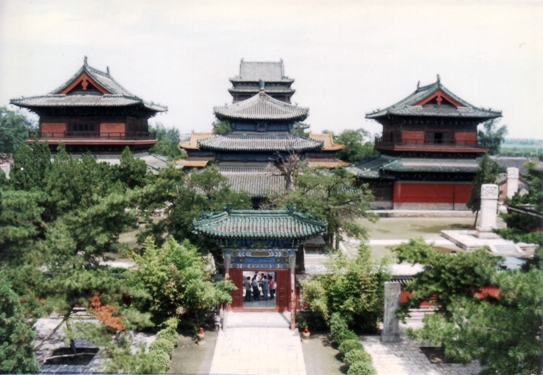
Longxing Temple Heritage.
6. The Scenic Corridors
As you navigate through the temple, don’t overlook the long, narrow corridors that connect the various halls. Flanked by weathered wooden pillars, these walkways evoke a sense of timelessness. Sunlight filtering through the leaves casts delicate patterns on the ground, encouraging you to slow down and appreciate the beauty surrounding you.
7. The Monastic Experience
Keep an eye out for the monks in their flowing gray robes, who embody the calm spirit of the temple. Their presence adds to the serene atmosphere, allowing visitors to witness the harmonious blend of daily life and spirituality that defines Longxing Temple. If you’re fortunate, you may even get a chance to join them for a simple yet heartwarming vegetarian meal.

Longxing Temple Heritage.
8. The Morning and Evening Rituals
For a truly immersive experience, plan to visit during the early morning or late evening. The morning bells ringing through the mist create an ethereal ambiance, while the sunset casts a warm glow over the red walls and golden tiles, making for unforgettable photographic opportunities.
9. Cultural Significance
Longxing Temple is not only a place of worship but also a vital piece of cultural heritage, having been rebuilt and renamed several times over its 1,600-year history. Understanding its historical context enhances your visit, as you appreciate the resilience and dedication of those who have preserved this sacred space.
Conclusion
Longxing Temple is a sanctuary where the past and present intertwine. From its magnificent architecture to its tranquil ambiance, every corner tells a story waiting to be discovered. As you explore, take your time to reflect on the teachings of Buddhism and the beauty of the surrounding nature, making your visit a truly enriching experience.
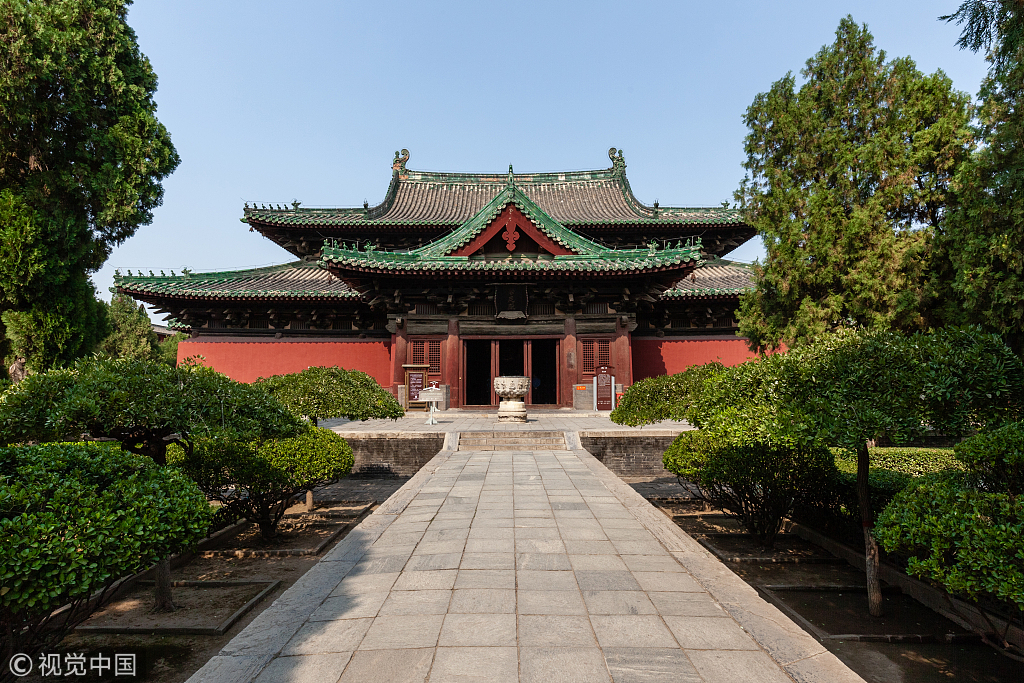
Longxing Temple Heritage.
Planning Your Visit: A Practical Guide
Planning Your Visit to Longxing Temple Heritage
Nestled in the urban area of Pengzhou, near Chengdu, the Longxing Temple (隆兴寺) is a serene escape into China’s rich Buddhist history and architectural beauty. Known for its majestic structures and deep-rooted heritage, planning your visit can enhance your experience at this historic site.
Getting There
By Train:
– Take a high-speed train from Chengdu Xipu Station to Pengzhou Station, which takes approximately 20 minutes.
– Upon arrival, a short taxi or bus ride will get you to Longxing Temple. The temple is about a 100-200 meter walk from the bus stop.
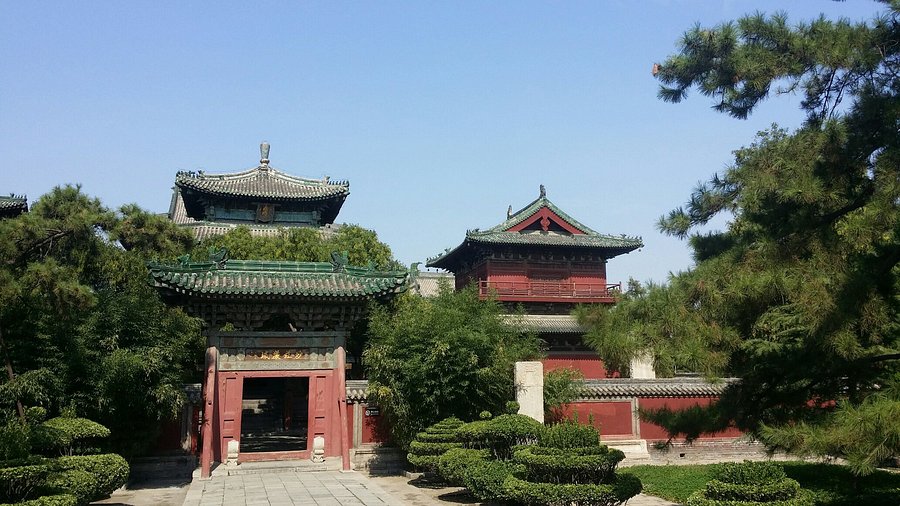
Longxing Temple Heritage.
By Car:
– If driving, simply navigate to Longxing Temple. Parking is available on-site, with hours running from 9:00 AM to 5:30 PM in summer and 9:30 AM to 5:30 PM in winter.
Opening Hours and Admission
- Opening Hours: Daily from 8:00 AM to 5:30 PM.
- Admission Fee: Free entry, but a nominal sanitation fee of 2 CNY is required.
Recommended Sightseeing Duration
Plan to spend at least 2 hours exploring the temple complex to fully appreciate its beauty and tranquility.
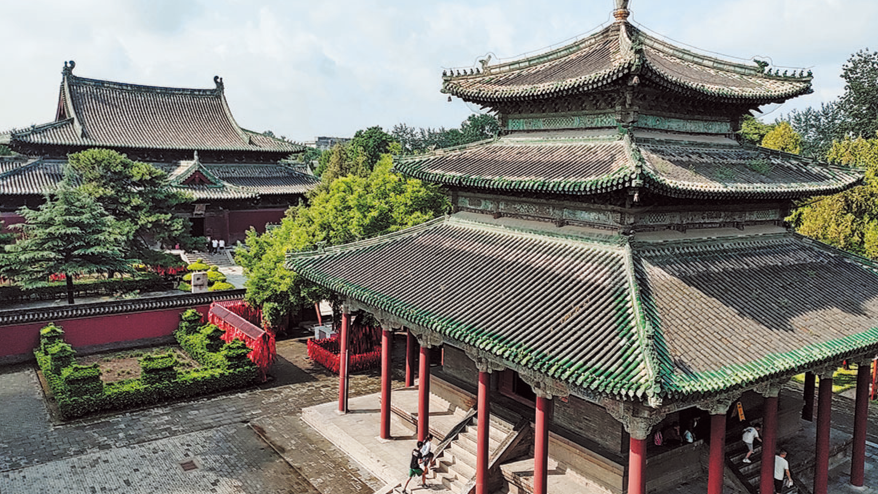
Longxing Temple Heritage.
Exploring the Temple
As you walk through the temple grounds, here are some key attractions to include in your itinerary:
- Mountain Gate: Enter through the majestic entrance, setting the tone for your spiritual journey.
- Hall of Heavenly Kings: Marvel at the vibrant murals and statues that pay homage to the guardians of Buddhism.
- Longxing Relics Stupa: This impressive 81-meter structure is one of only 19 remaining sarira stupas in China, housing relics of Shakyamuni Buddha.
- Bell and Drum Towers: These towers enhance the temple’s ambiance, with the soft chimes of the bells resonating through the air.
- Courtyard and Ginkgo Tree: Don’t miss the ancient ginkgo tree, especially beautiful in autumn when its leaves blanket the ground in gold.
Tips for a Memorable Visit
- Best Time to Visit: For a tranquil experience, visit early in the morning to hear the morning bells or during the evening when the sunset casts a warm glow over the temple.
- Photography: Capture the stunning architecture and serene atmosphere; the golden tiles and red walls provide a picturesque backdrop.
- Vegetarian Cuisine: Sample the simple yet heartwarming vegetarian dishes offered at the temple, especially the hot soup that warms the soul.
Nearby Attractions
While in Pengzhou, take the opportunity to explore other attractions:
- Haiwozi Ancient Town: A charming area showcasing the ancient Shu civilization.
- Zhongba Forest: A mystical forest ideal for nature walks.
- Yufu Wetland: Experience bamboo rafting in a pristine natural setting.
- White Deer Music Town: A unique blend of Chinese and European architecture.
Accommodation Options
Consider staying nearby for an immersive experience:
- Chanyi Longxing Courtyard Hotel: Enjoy a peaceful retreat with private courtyard views.
- Pengzhou Yage Hotel: Offers panoramic city views and easy access to local attractions.
Final Thoughts
Longxing Temple is more than just a historical site; it’s a place for reflection and connection with the past. As you wander through its ancient halls, let the serene atmosphere envelop you, providing a gentle pause from the hustle and bustle of modern life. Whether you’re a history enthusiast or a casual traveler, this temple promises an enriching experience that beautifully encapsulates Chinese culture and spirituality.
Tickets: Prices, Booking, and Tips
When planning your visit to Longxing Temple, it’s essential to be informed about ticketing, booking options, and practical tips to enhance your experience at this serene historical site.
Admission Details
-
Ticket Price: Admission to Longxing Temple is free, making it an accessible destination for all travelers. However, there is a nominal sanitation fee of 2 CNY that visitors are required to pay upon entry.
-
Opening Hours: The temple is open daily from 8:00 AM to 5:30 PM. Arriving early can provide a peaceful experience, allowing you to enjoy the morning ambiance and the soothing sounds of temple bells.
How to Get There
- From Chengdu:
- By High-Speed Train: Catch a high-speed train from Chengdu Xipu Station to Pengzhou Station. The journey takes about 20 minutes.
-
By Bus or Taxi: Upon arrival at Pengzhou Station, you can take a local bus or taxi to Longxing Temple, which is approximately a 100-200 meter walk from the nearest drop-off point.
-
By Car: If you’re driving, navigate to Longxing Temple using GPS. The site has a parking lot available with operational hours from 9:00 AM to 5:30 PM during summer and 9:30 AM to 5:30 PM in winter.
Tips for Your Visit
-
Best Time to Visit: For a tranquil experience, consider visiting early in the morning or later in the evening. Early mornings allow you to listen to the gentle chimes of the temple bells, while sunsets can create a beautiful backdrop against the temple’s golden tiles.
-
What to Wear: Since Longxing Temple is a place of worship, it’s advisable to dress modestly. Comfortable walking shoes are recommended, as you will be exploring various halls and corridors.
-
Photography: The temple’s stunning architecture, especially the 81-meter-high Vajra Throne Stupa, offers excellent opportunities for photography. Make sure to capture the intricate details and the serene surroundings.
-
Local Delicacies: Don’t miss the chance to try the vegetarian food available at the temple. A simple bowl of hot soup can be particularly heartwarming after wandering through the temple grounds.
-
Plan Your Route: To make the most of your visit, consider the recommended tour route:
- Mountain Gate
- Hall of Heavenly Kings
- Longxing Relics Stupa
- Bell Tower (Ksitigarbha Hall)
- Drum Tower (God of Wealth Hall)
By keeping these ticketing details and travel tips in mind, you can ensure a smooth and enriching visit to Longxing Temple, where history and tranquility await.
How to Get There: A Complete Transportation Guide
Getting to Longxing Temple
Longxing Temple, a magnificent site steeped in history, is nestled in the urban area of Pengzhou, which lies just northwest of Chengdu in Sichuan Province. With its striking architecture and serene ambiance, it draws history enthusiasts and cultural travelers alike. Below is a comprehensive guide on various transportation options to reach this ancient gem.
From Chengdu to Pengzhou
1. High-Speed Train
– Departure Station: Chengdu Xipu Station
– Travel Time: Approximately 20 minutes
– Frequency: Trains run frequently throughout the day, making this the most efficient option.
– Arrival Station: Pengzhou Station
– Transfer to Longxing Temple: Once you arrive at Pengzhou Station, you can take a taxi or local bus to Longxing Temple. The distance is around 100-200 meters, making it a short and convenient trip.
2. By Car
– Driving Directions: From Chengdu, take the G5 (Chengdu–Chongqing Expressway) and follow signs toward Pengzhou. Depending on traffic, the drive should take about 40-60 minutes.
– Parking: Longxing Temple has a parking lot available for visitors. Parking hours are from 9:00 AM to 5:30 PM in the summer and 9:30 AM to 5:30 PM in the winter.
3. Public Bus
– Bus Routes: Several local buses connect Chengdu to Pengzhou. Look for services that head towards the Pengzhou city center, where you can find additional transport options to the temple.
– Duration: Bus travel may take longer than other options, approximately 1 to 1.5 hours, depending on traffic.
Local Transportation in Pengzhou
Once you arrive in Pengzhou, navigating to Longxing Temple is straightforward:
- Taxi Services: Taxis are readily available and can be hailed from the station. The fare should be quite reasonable, especially for the short distance.
- Bicycle Rentals: For those looking to explore at a leisurely pace, consider renting a bicycle. This option allows you to enjoy the local scenery while making your way to the temple.
Accessibility Considerations
Longxing Temple is designed to accommodate visitors of all mobility levels. The main pathways are well-maintained, and there are facilities to assist those with disabilities.
Visitor Information
- Ticket Price: Admission to Longxing Temple is free, but a nominal sanitation fee of 2 CNY may apply.
- Opening Hours: The temple is open daily from 8:00 AM to 5:30 PM.
Conclusion
Whether you choose the swift high-speed train or the scenic drive, getting to Longxing Temple is a straightforward journey from Chengdu. Once there, immerse yourself in the tranquil atmosphere and rich history that this remarkable site offers. Enjoy your visit!
Local Cuisine and Accommodation Nearby
Delightful Flavors and Cozy Stays Near Longxing Temple
As you explore the serene beauty of Longxing Temple, immerse yourself in the local culture by indulging in the region’s vibrant cuisine and enjoying comfortable accommodations that reflect the charm of Pengzhou.
Culinary Highlights
-
Jiuchi Pressed Duck
Renowned as the “Home of Pressed Duck,” Jiuchi Town offers a culinary experience that is hard to forget. The ducks are prepared to perfection, boasting shiny, oily skin that tantalizes the taste buds. Enjoy it fresh, steamed alongside alcohol, or savor the cured version, which is best when sliced thinly to reveal its rich flavor. -
Cold Water Fish
At Xiaoyudong in Longmen Mountain Town, you can feast on over 50 varieties of cold water fish, prepared in an impressive array of over 30 ways. From delicate sashimi dipped in wasabi soy sauce to pickled, fried, or boiled options, the versatility of this local delicacy ensures a memorable dining experience. -
Juntun Guokuai
Experience traditional Sichuan pan-fried cake, known for its “three flips and six turns” technique. Made using water from Xiangshui Well and enriched with lard, these crispy cakes encase hearty fillings that are sure to please. -
Oil-Scalded Goose
A local specialty cooked in an “open pot,” the tender meat of oil-scalded goose is seasoned and aromatic, perfect for a hearty meal after a day of sightseeing.
Recommended Accommodations
-
Chanyi Longxing Courtyard Hotel (Longxing Temple Branch)
Nestled close to the temple, this hotel provides guests with private courtyard views and relaxing private pools. It’s an ideal spot for travelers seeking tranquility and comfort after a day of exploration. -
Pengzhou Yage Hotel (Municipal Government Walmart Plaza Branch)
Offering panoramic views of the city, this hotel combines comfort with exquisite local cuisine, making it a perfect base for your adventures in Pengzhou.
Travel Tips
- Dining Hours: Many local eateries serve meals throughout the day, but it’s advisable to check for peak dining times, especially on weekends when tourists flock to the area.
- Cultural Etiquette: When dining, it’s common to share dishes among the table, so be open to trying a variety of local flavors.
- Accommodations: Booking in advance, particularly during peak travel seasons, can ensure you secure a room in your preferred hotel.
With its rich historical backdrop and culinary delights, a visit to Longxing Temple offers not just a glimpse into the past but an authentic taste of Sichuan’s vibrant culture. Enjoy your journey through this enchanting area, where each meal and each stay adds a layer to your experience of this ancient land.
Frequently Asked Questions
Frequently Asked Questions about Longxing Temple Heritage
1. What is the history of Longxing Temple?
Longxing Temple, built during the Eastern Jin Dynasty over 1,600 years ago, has a rich history marked by resilience and transformation. It has undergone multiple renovations and name changes, reflecting the cultural and historical shifts in the region. Today, it stands as a testament to the enduring legacy of Buddhism in China.
2. How do I get to Longxing Temple from Chengdu?
Traveling to Longxing Temple is convenient. You can take a high-speed train from Chengdu Xipu Station to Pengzhou Station, which takes only about 20 minutes. From there, you can take a bus or taxi for a short ride to the temple. Alternatively, driving is also an option, with parking available on-site.
3. What are the opening hours and admission fees?
Longxing Temple is open daily from 8:00 AM to 5:30 PM. Admission is free, though there is a nominal sanitation fee of 2 CNY. It’s advisable to check the timing during holidays or special events, as they may vary.
4. How much time should I plan to spend at the temple?
A visit to Longxing Temple typically takes about 2 hours. This allows ample time to explore the main halls, admire the stunning architecture, and enjoy the serene atmosphere of the temple grounds.
5. What are the main attractions within Longxing Temple?
Key attractions include the majestic Hall of Heavenly Kings, the stunning Longxing Relics Stupa (which stands at 81 meters high), the Hall of the Great Buddha, and the tranquil Tibetan Scripture Building. Each of these structures showcases unique architectural styles and Buddhist relics.
6. Can I take photos inside the temple?
Yes, photography is generally allowed inside Longxing Temple, but be mindful of signs and requests from temple staff, particularly in areas designated for prayer or meditation. The temple’s picturesque settings provide excellent opportunities for memorable photographs.
7. Is there any food available at Longxing Temple?
Yes, the temple offers simple vegetarian meals, including heartwarming soups. These meals reflect the Buddhist practice of vegetarianism and are perfect for those looking to enjoy a serene dining experience amidst their visit.
8. What should I wear when visiting Longxing Temple?
It is recommended to dress modestly and respectfully, as Longxing Temple is a place of worship. Comfortable shoes are also advisable, as you will be walking through various structures and corridors. Light-colored clothing can be a good choice, especially for photography.
Final Thoughts on Your Trip
As your journey through the serene corridors and sacred spaces of Longxing Temple comes to a close, the echoes of ancient wisdom and tranquil beauty linger in your heart. This historical gem, nestled in the lush landscapes of Pengzhou, offers a unique glimpse into China’s rich spiritual heritage.
Reflections on Your Visit:
-
A Journey Through Time: Walking through the temple’s red walls and under the watchful gaze of the towering Vajra Throne Stupa, you’ve traversed over 1,600 years of history, feeling the pulse of a culture that thrives on contemplation and reverence.
-
Moments of Tranquility: Whether it was the gentle chime of the bronze bells or the soothing scent of sandalwood that captivated your senses, Longxing Temple invites you to pause, breathe, and reconnect with yourself amidst its serene beauty.
-
Culinary Delights: Don’t forget to savor the simple yet heartwarming vegetarian meals offered within the temple. A bowl of hot soup not only nourishes the body but also warms the soul, enhancing your spiritual experience.
-
Engagement with Nature: The grand ginkgo tree, with its golden autumn leaves, is a reminder of nature’s cycle and the beauty of impermanence. Take a moment to reflect beneath its branches, allowing the tranquility of Longxing Temple to seep deep into your spirit.
As you prepare to depart, carry with you the wisdom of the ages that permeates this sacred site. Longxing Temple is not just a destination; it’s an experience that enriches your understanding of Chinese history and culture.
Final Tips for Your Journey:
-
Visit at Dawn or Dusk: To truly capture the essence of tranquility, consider returning at dawn to hear the morning bells or at twilight to see the temple bathed in the warm glow of sunset.
-
Embrace Local Culture: Take the time to explore nearby attractions, such as the charming Haiwozi Ancient Town and the breathtaking Zhongba Forest, to fully immerse yourself in the cultural richness of Pengzhou.
Longxing Temple stands as a testament to the enduring spirit of Buddhism and the beauty of simplicity. May your memories here inspire you, guiding your travels and enriching your understanding of the world. Safe travels on your next adventure!